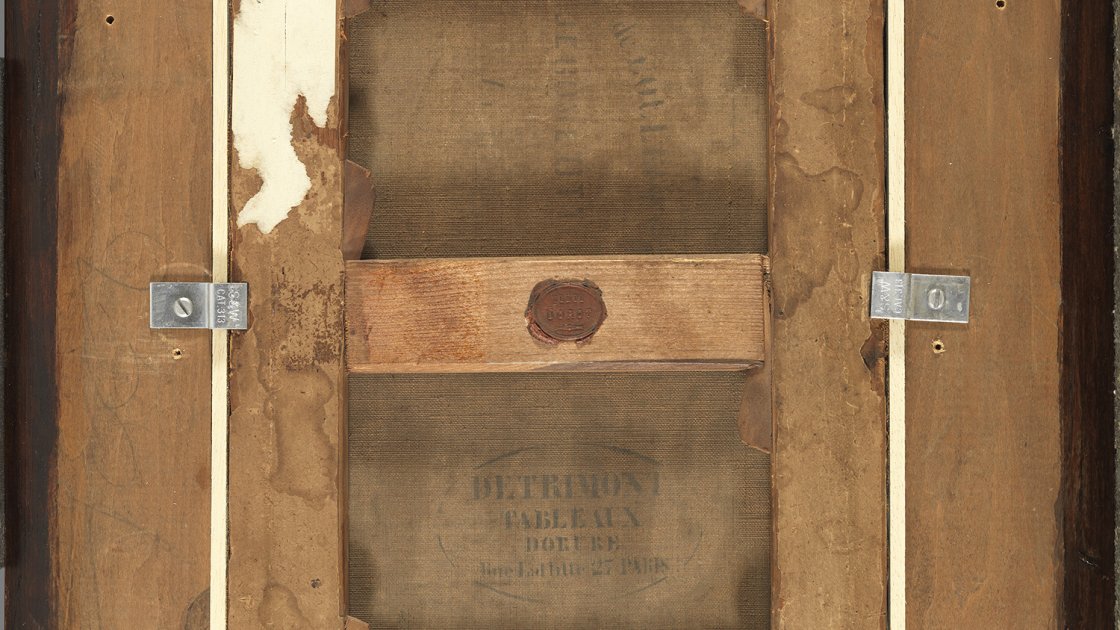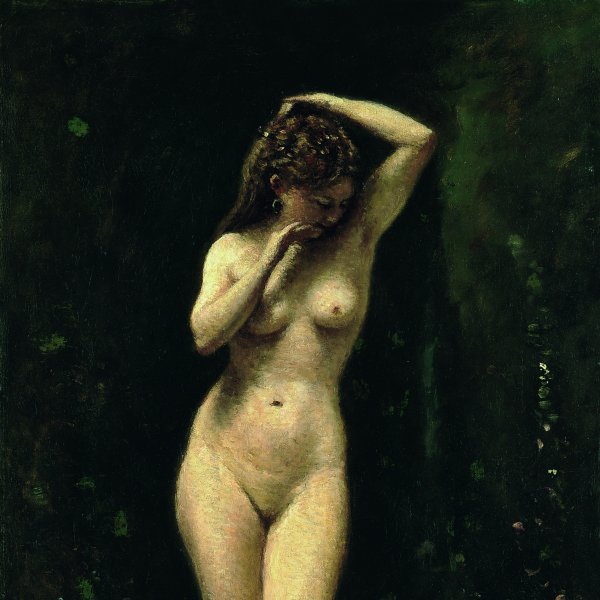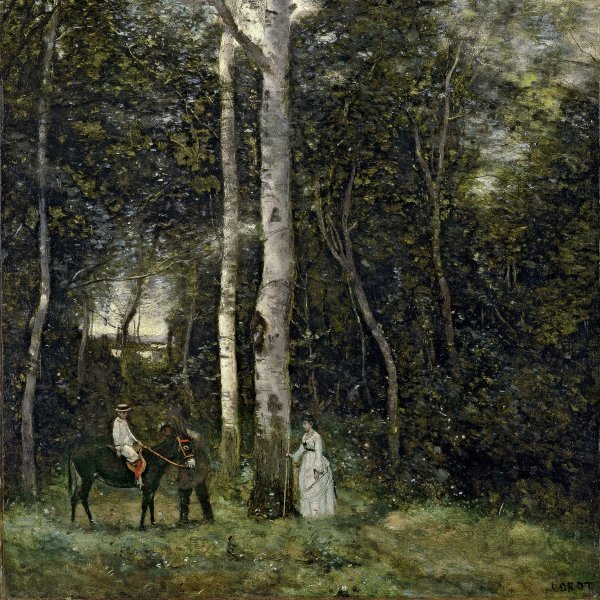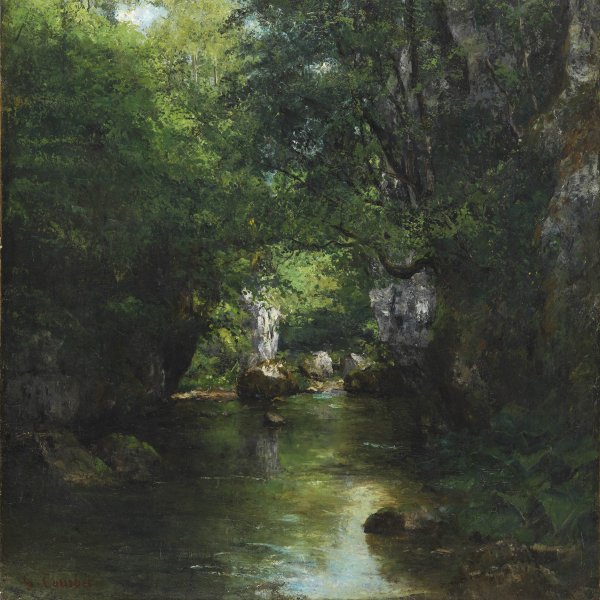Interior of the Church at Mantes
1865 - 1870
Oil on canvas.
35 x 22.5 cm
Museo Nacional Thyssen-Bornemisza, Madrid
Inv. no.
493
(1976.69
)
Not on display
Level 2
Permanent Collection
Level 1
Permanent Collection
Level 0
Carmen Thyssen Collection and Temporary exhibition rooms
Level -1
Temporary exhibition rooms, Conference room and EducaThyssen workshop
Camille Corot first travelled to Rosny, near Mantes, with his childhood friend Abel Osmond to visit the residence of the latter’s uncle André Osmond, the librarian in charge of the fabulous collection of the Duchess of Berry. The artist was fascinated by the place and after Osmond died continued to visit his widow, who even made available to him a small studio in a building adjoining her house. Through Mme Osmond he received the commission to execute decorative paintings for the bathroom of the new house of her nephew Parfait Robert, who settled in Mantes in 1840.
Corot had included the silhouette of Mantes cathedral in several of his landscapes, but in the Museo Thyssen-Bornemisza painting he depicts the refined Gothic style of its aisles. Scenes of church interiors, which are characteristic of the Dutch painting tradition, were not particularly employed by Corot. Throughout his career the French artist produced only three: the first in 1834, Venice. Interior of the Baptistery of St Mark’s, the second between 1865 and 1870, the Interior of the Church at Mantesshown here; and the last in 1874, View of the Interior of Sens Cathedral.
As Rodolphe Walter notes, in the painting in the Thyssen-Bornemisza collection Corot “seeks difficulty in the execution by choosing an oblique viewpoint that allows him to show the picturesque — that is, romantic — detail of the interior of a church famous for its architecture.” This slanting view enables Corot to attach particular importance to the columns that frame a section of the aisle covered with groin vaults, to which he devotes greater attention than the lower part of the canvas. The two figures that can be distinguished in the composition, a man descending the steps and a woman at prayer — who, according to the aforementioned author, could be the judge Parfait Robert and Mme Robert or Mme Osmond — enliven the composition to an extent.
Paloma Alarcó
Corot had included the silhouette of Mantes cathedral in several of his landscapes, but in the Museo Thyssen-Bornemisza painting he depicts the refined Gothic style of its aisles. Scenes of church interiors, which are characteristic of the Dutch painting tradition, were not particularly employed by Corot. Throughout his career the French artist produced only three: the first in 1834, Venice. Interior of the Baptistery of St Mark’s, the second between 1865 and 1870, the Interior of the Church at Mantesshown here; and the last in 1874, View of the Interior of Sens Cathedral.
As Rodolphe Walter notes, in the painting in the Thyssen-Bornemisza collection Corot “seeks difficulty in the execution by choosing an oblique viewpoint that allows him to show the picturesque — that is, romantic — detail of the interior of a church famous for its architecture.” This slanting view enables Corot to attach particular importance to the columns that frame a section of the aisle covered with groin vaults, to which he devotes greater attention than the lower part of the canvas. The two figures that can be distinguished in the composition, a man descending the steps and a woman at prayer — who, according to the aforementioned author, could be the judge Parfait Robert and Mme Robert or Mme Osmond — enliven the composition to an extent.
Paloma Alarcó










